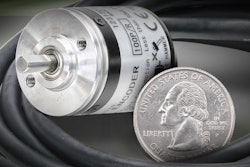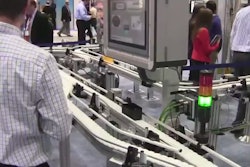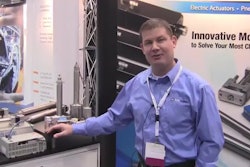PackML will begin to deliver on its promise
There was a landmark meeting of the minds this past December aimed at clarifying and simplifying OMAC PackML. Engineering leaders from PepsiCo, P&G, and Nestle all agreed that it should be easier and faster to implement PackML and see an ROI from this universal approach to machine states and tag-naming conventions. As momentum builds—Eaton Corp., Invensys Operations Management, Miller Coors, Pack Tech, Patti Engineering (a systems integrator), and SMC Corp. have all become OMAC corporate members since Pack Expo 2012—PackML will demonstrate it is ready for prime time.
Welcome to PackSpec
Everybody wants this—an up-to-date, simplified, functional User Requirements Specification (URS) for packaging machinery. Based on OMAC Packaging Guidelines, the goal is to get you 80% of the way there and let you instantly know what to expect if someone describes a machine as “PackSpec.” I don’t know anyone who doesn’t think this is huge. A machine builder recently told me that the average specification they receive costs them $2,000 in engineering time to review—nothing else, just review.
URS documents have a general reputation for being outdated, limiting, arbitrary, and far too detailed. They tend to be brand-specific rather than functional and standards-based because their authors want to limit competition. Once in place, it seems nobody has the time to rewrite them.
PackSpec is another great reason to join OMAC and get your input into the specification. Or join OMAC just to get access to the finished document—think how much it would cost to have your engineering staff or an outside consultant put this document together for you.
‘Tablet’ human/machine interfaces—the next big thing
We’ve all been waiting for technologies such as smart labels, farm-to-fork traceability, and RFID to go truly mainstream--what’s referred to as the ‘hockey stick’ curve on the adoption graph. But things take time to come together in industrial versus consumer electronics. So look to the consumer world for the volumes required to make new hardware affordable. And that next big thing would be multi-touch touchscreens for our machines. They are the industrial equivalent of the tablet, and they’re coming on the market already.
The hardware is impressive, but it will be up to you as a machine builder or SCADA supplier to deliver the software. Start designing for Windows™ 8 now and get first mover advantage in your marketplace
If you’re a user, start demanding multi-touch applications from your suppliers and they’ll make it happen. In fact, that’s the best (only) way to make things move fast. Lack of user specifications is what slowed down PackML adoption until recently.
Just say ‘no’ to messing with OEM code
Thank Nestlé for announcing at The Automation Conference last year that they want all diagnostics to be performed from the HMI and that maintenance techs should not be changing the packaging machine builder’s PLC code. OEMs and plant operations management alike will all applaud this move. After all, what changed in the code overnight that made the machine stop running? Nothing. The cause is something worn out that needs to be fixed or replaced, not masked until there’s a catastrophic failure.
If you agree, go to the Packaging Machinery group on LinkedIn and comment on the Manager’s Choice discussion ‘Just say no to messing with OEM code.’ What better way to get people from all over the world on-topic and heard?
If you’re a packaging machine builder, you will need to add functionality to your HMI, but you’ll also differentiate your machinery, and you’ll save yourself warranty and training and field service call costs. It will be a good investment.
You may recall my predictions from a previous year that we will see more animation and video tied into fault handling, that sort of thing. Well, what Nestlé is starting here will lead directly to that prediction coming true.


























